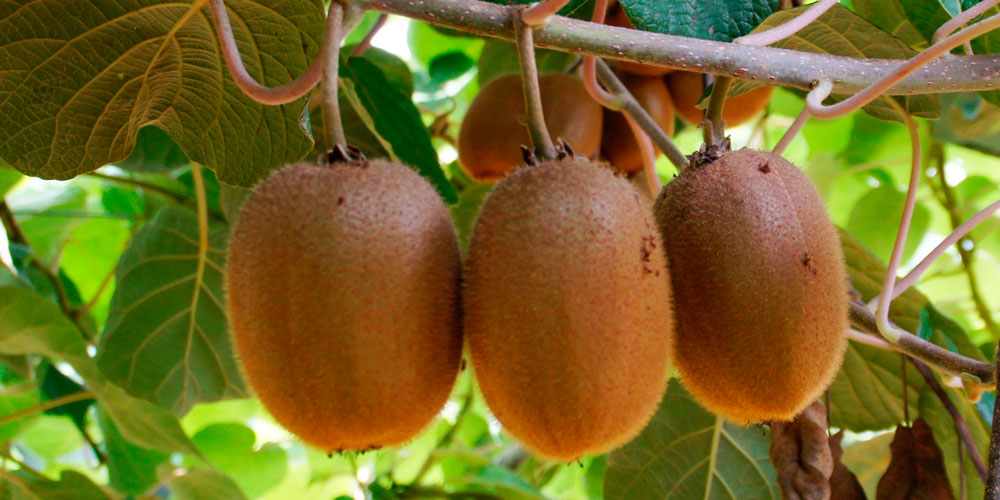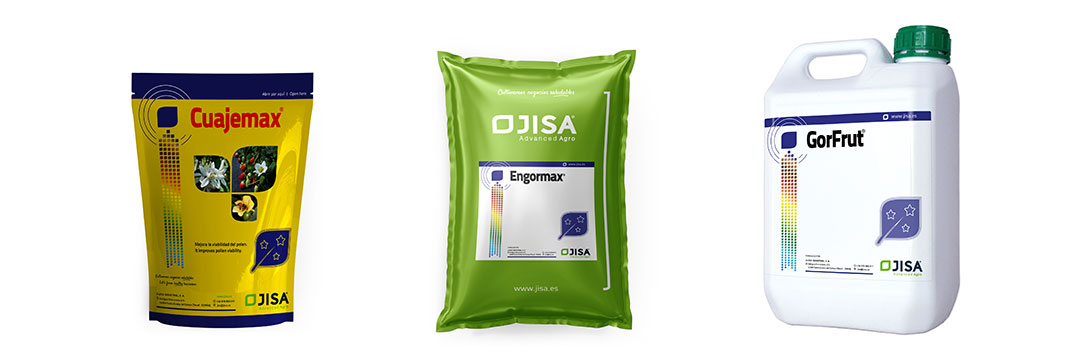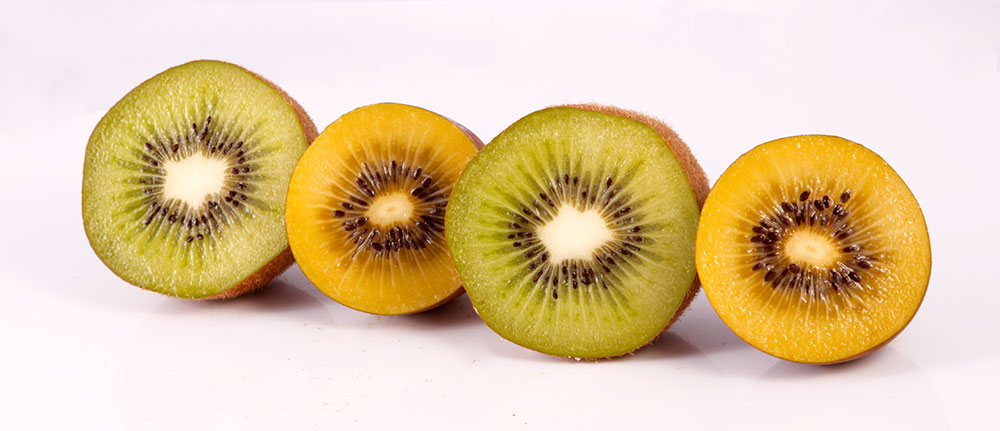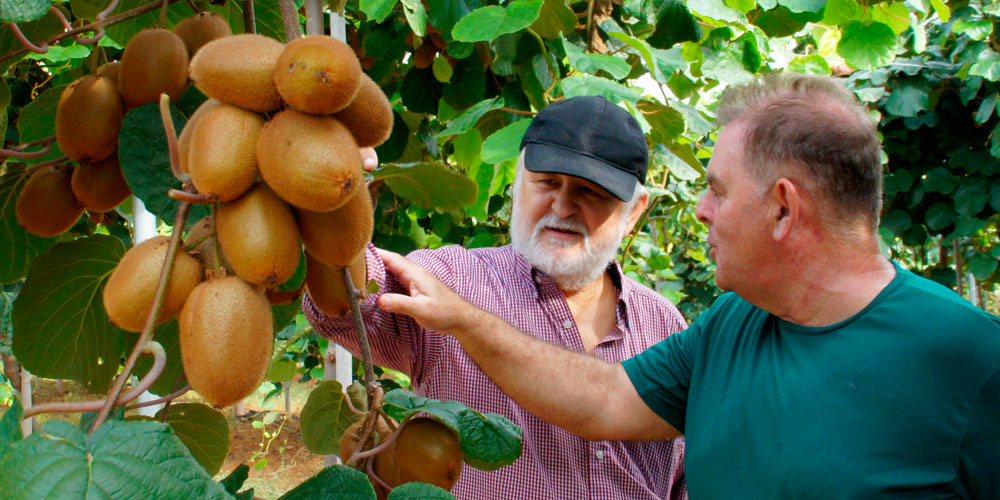During the cultivation of kiwi or actinidia, in an earlier article we emphasized the importance of establishing a correct subscriber plan during the cultivation of the kiwi as an investment to ensure its maximum rentability.
The cultivation of actinidia, although with its peculiarities, enters the group of cultivation of vineyards, understanding as such the fruit trees of climbing and deciduous characteristics as they are:
- Cultivation of the vine.
- Cultivation of passion fruit.
- And growing the kiwi itself.
Fertilizers for fattening the fruits of actinidia
This time, the JISA technical team, focuses its attention on fertilizers to fatten the fruits of kiwi or actinidia. Proper nutrition of the crop at this stage is essential for the development of its fruits.
This fruit is a deciduous shrub, with climbing size and the production of its fruits are located in the vegetative branches of the year, developed on 2nd year old wood. It is also a plant with different chilling accumulation hours depending on the species and variety, in which any lack of these cold hours can cause an imbalance between the vegetative and the productive phase.
To perform proper nutrition of the cultivation of actinidia, we must also properly manage other cultural practices. For example, perform good irrigation management that ensures proper hydration of the soil, without reaching the parting, because it is especially sensitive. Also maintain the right soil conditions, with a pH slightly acid from 6 to 6,5 and without chlorides, in addition to an adequate level of organic matter located around 2 to 3%.
To manage the kiwi subscriber efficiently, the JISA technical team always recommends performing previous soil analysis and foliar analysis during cultivation, an effective way to prevent any nutritional imbalance and be able to correct it in time.

What factors are involved in the fattening of kiwi fruits?
The subscriber of the kiwi or actinidia, will influence as a relevant factor both in the caliber of the fruit, as well as in its form and even in its organoleptic qualities, without forgetting that it also has an outstanding relationship with the number of seeds present in the fruit.
Proper use of pollinator fruit is essential. Being a dioecious flowering plant, it is necessary to use pollinating varieties, distributed correctly and in the right amount in order to effectively carry out a natural pollination. Usually, this is greatly improved along with the help of pollinating insects during flowering. Since many crops develop under a monofilament mesh facility, the implantation of hives in the flowering phase is important.
Note that, during this phase, low relative humidity conditions (HR<60%) high temperatures (T>26ºC), cause pollen dehydration and lack of curdling.
With regard to the aerial vegetative part, in the cultivation of kiwi or actinidia, there is special competition between vegetative shoots and fruits by the nutritious elements.
Thus, a plant with an excessive vegetative development will negatively influence the size of the fruits. It is for this reason that the use of certain growth regulators that inhibit this growth and favor the development of the fruits is authorized. It is true that it is necessary to find alternatives to the use of these regulators or at least reduce their use, because they can affect th quality of our production in the first place, but in the long run also the future development of the tree.
In this stage of cultivation, the plant continues to develop and special care must be taken with vegetative shoots that appear strongly from old wood. Whether they are left or not controlled, they will be direct competition for the new fruits for the nutritious elements. In addition, when these arrive at the stage of accumulation of dry matter, excess shade on productive sprouts will impair the assimilation of nutrients to these fruits.
An important practice is, once they begin to fatten the fruits, to make a clearing of them, eliminating those fruits of lower caliber, the doubles and deformed ones that are clearly seen that they will not be commercial.

Special fertilizers for fattening kiwi fruits
The technical team of JISA, recommends the use of the agricultural biostimulant Cuajemax® in the flowering phase, with the aim of improving the germination of pollen grains and elongation of the polyynic tube to increase the number of seeds present in the fruit.
Likewise, the use in pre-flowering and flowering of other of JISA’s biostimulants, Glybet®. Its application helps the plant tolerate extreme water stress situations and prevents possible pollen dehydration that would make germination difficult.
In the post-petal fall phase and over the next 8 weeks, comprising from early summer to mid-August, it is the period where the greatest development of the fruits takes place.
This is the time for increased demand for calcium and potassium. Calcium that we should have contributed to the plant before this time so that it is available to you. It is a stage in which a possible imbalance of both elements with magnesium must be monitored. The Nutrijisa® range helps us to correct and contribute the elements that our crop needs, performing them in foliar treatments to have a faster effect in terms of being available to the plant.
Engormax® (biostimulant with algae extract and amino acids) is the product that will help especially in this fattening phase, providing the nutritional elements that the fruit needs, with a biostimulant effect that promotes cell division in the phase where the fruit will reach 70% of its weight and final length. This helps to increase the level of dry matter in a phase that is very low, so we ensure a high percentage of dry substance at harvest time.
This summer period, about 8 weeks, is the highest temperature season and when the kiwi is subjected to further evotran aspiration. Irrigation management is important during this period, keeping the soil moist and avoiding excess water that harms the root system. During this period, the use of Gorfrut® improves the plant’s tolerance to extreme conditions, providing the potassium plant that assimilates quickly, helping to improve the caliber and quality of its fruits.
After this summer period of fruit growth, in mid-August, a phase of accumulation of dry matter begins, where the fruit will reach the maximum of its specific weight and the final caliber until its final harvest.
At this stage potassium intake is essential, the TOP-K biostimulant provides the crop with a fast assimilation potassium and will keep the photosynthetic capacity of the leaves intact after the warm summer. At this stage the kiwi plant begins the process of lightening vegetative young branches.

The result of proper nutrition during cultivation results in good quality fruits. Good quality fruits are considered those without deformations, good color, with a weight between 90 to 100 grams, with values that are as close as possible to 7.5ºBrix and 15% dry matter.
How can I improve the caliber of kiwi fruits?
A question among kiwi fruit producers is usually: How can I improve the caliber and percentage of dry matter in green pulp kiwifruit varieties like Hayward and yellow pulp like Jintao or Sun Gold? The answer is by applying the Engormax® biostimulant.
Applications with this formulation are beneficial in both green and yellow pulp varieties. With it, the effect we achieve is better homogenization of the caliber, increased production and improved fruit quality.
Applied in the first phase of fruit fattening, it helps to obtain a higher specific weight with high percentage of dry matter. Its special formulation allows it to be applied with most plant protection products.
For any questions or technical queries about the cultivation of kiwi or actinidia, the technical-commercial team of JISA, which can help you obtain optimal yields, is at your disposal.
